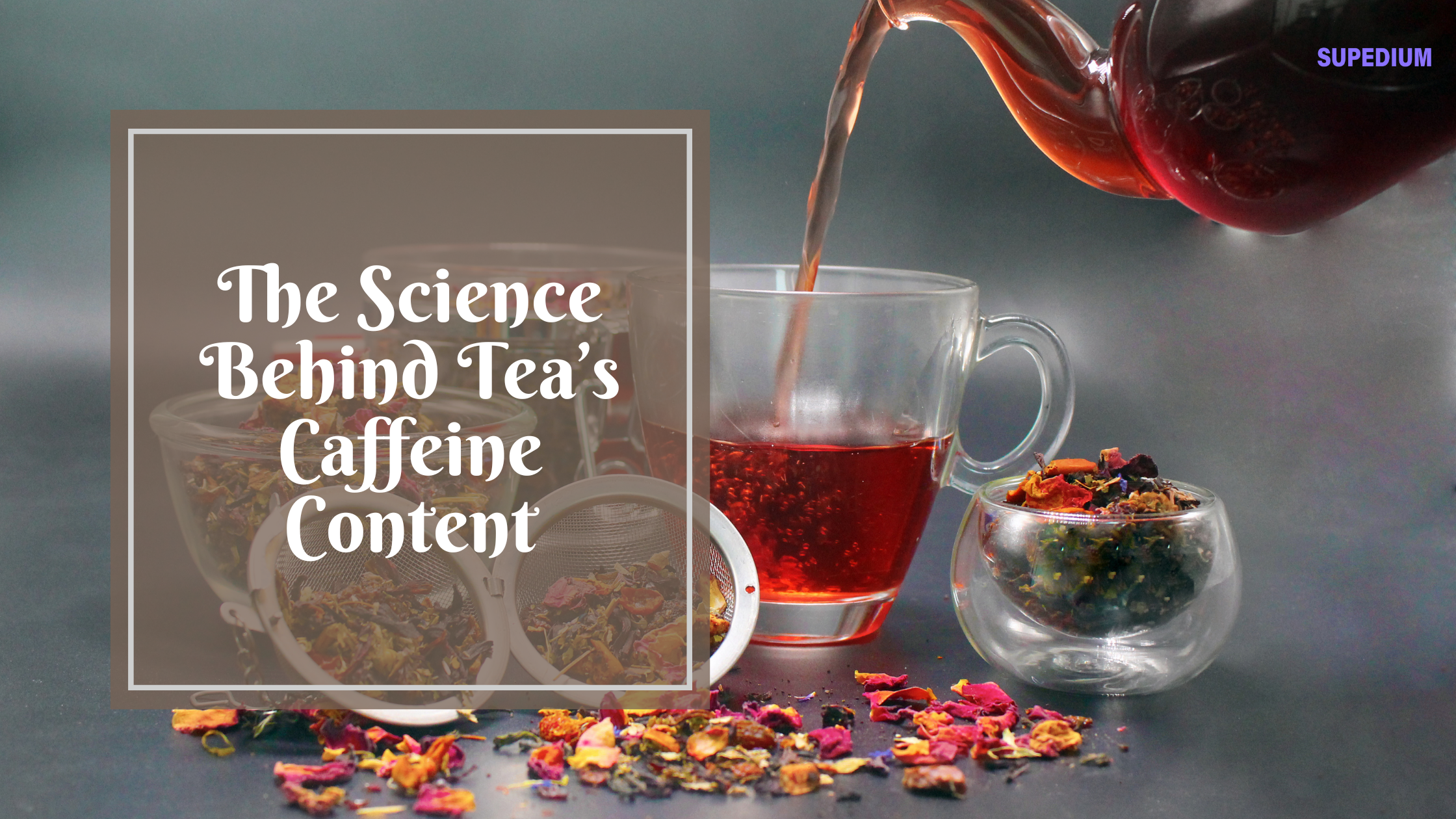Table of Contents
![]()
Introduction
Tea is one of the most widely consumed beverages worldwide, cherished not only for its flavor but also for its potential health benefits. Among its various components, caffeine stands out due to its stimulating effects. Understanding the science behind tea’s caffeine content involves exploring its biochemical foundations, the factors influencing its concentration, and the implications for health.
Understanding Caffeine
Caffeine is a naturally occurring stimulant found in tea, coffee, and various other plants. Its chemical structure—C₈H₁₀N₄O₂—allows it to block adenosine receptors in the brain, which in turn prevents the onset of drowsiness and promotes alertness. This interaction with the central nervous system can boost cognitive performance and temporarily elevate mood.
Tea Plant and Caffeine Production
Tea is derived from the Camellia sinensis plant, where caffeine plays a role in deterring herbivores and inhibiting the growth of competing plants. The caffeine content in tea leaves varies according to their maturity and the specific tea variety. Young leaves and buds typically have higher caffeine concentrations compared to older leaves.
Factors Influencing Caffeine Content in Tea
- Type of Tea:
- Black Tea: Generally has the highest caffeine content, ranging from 40 to 70 milligrams per 8-ounce cup. This is due to its full oxidation process, which enhances caffeine levels.
- Green Tea: Contains about 20 to 45 milligrams per cup. The lower caffeine content is attributed to minimal oxidation.
- Oolong Tea: Falls between black and green tea, with caffeine content ranging from 30 to 50 milligrams.
- White Tea: Typically has the lowest caffeine levels, around 15 to 30 milligrams, because it is the least processed.
- Herbal Teas: Often caffeine-free, as they are made from herbs, fruits, or flowers rather than tea leaves.
- Processing Methods:
- The fermentation or oxidation process of tea leaves affects caffeine levels. Black tea undergoes full oxidation, while green tea is minimally processed to preserve its catechins and lower caffeine content. Oolong tea is partially oxidized, resulting in intermediate caffeine levels.
- Tea Leaves:
- The age and part of the leaf used can influence caffeine content. Younger leaves and buds, being richer in caffeine, often produce tea with higher caffeine levels.
- Brewing Time and Temperature:
- Longer brewing times and higher temperatures extract more caffeine from the leaves. A standard recommendation is to steep tea for 3-5 minutes; exceeding this can significantly increase the caffeine content.
- Tea Blends and Additives:
- Commercial tea blends and flavored teas may contain additional caffeine from added tea leaves or caffeine powders, affecting the total caffeine content.
Caffeine Absorption and Metabolism
Once consumed, caffeine is rapidly absorbed into the bloodstream, reaching peak levels within 1-2 hours. Its half-life—time taken for the body to eliminate half the caffeine—varies among individuals, ranging from 3 to 5 hours on average. Factors such as age, liver function, and genetic variations can influence metabolism. Caffeine’s effects on sleep and alertness are well-documented, with high intake potentially disrupting sleep patterns and causing jitteriness.
Health Implications
Moderate caffeine consumption, typically defined as 200-400 milligrams per day, is generally considered safe for most adults and can offer benefits such as enhanced cognitive function and mood improvement. However, excessive intake can lead to negative health effects, including insomnia, increased heart rate, and digestive issues. It is essential to manage consumption and be mindful of individual tolerance levels.
Conclusion
The caffeine content in tea is influenced by a complex interplay of factors including tea type, processing methods, and brewing conditions. Understanding these variables can help consumers make informed choices about their tea and caffeine intake. Ultimately, managing caffeine consumption through tea can be an enjoyable and health-conscious practice.
Share This



